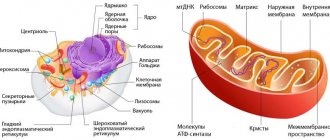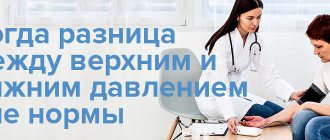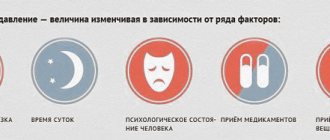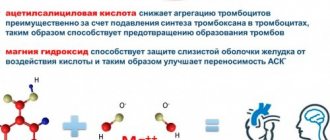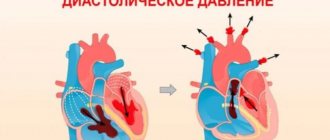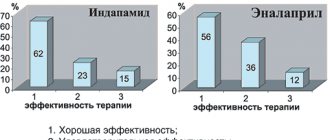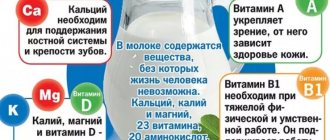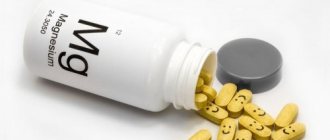The article describes in detail two points of hormonal research - T3 and free T3, what is the difference between them, what is the relationship between these biologically active substances.
Here you can familiarize yourself with the analysis methodology and indications for it. The information is supplemented by an informative video in this article, as well as interesting photo materials.
Spatial and structural formulas of thyroid hormones
T3 hormone (triiodothyronine) is the most active of the main active substances produced by glandula thyreoide. The number “3” in the abbreviation means the presence of three iodine atoms in the molecule of the substance. This hormone is formed as a result of the breakdown of T4 (another active substance produced by the thyroid gland) in the process of splitting off one iodine atom from it.
Forms of existence of hormones
T3 exists in two forms, common and free. They are also indicated separately on the hormonal study form. So what is the difference between T3 general and T3 free?
The hormone produced in thyrocytes enters the blood, where most of it binds to protein molecules responsible for transporting the substance to the tissues that need it. However, a small amount of triiodothyronine circulates in the blood plasma without reacting with anything.
This is free T3. And the entire set of hormones, both associated with protein agents and those that have not reacted with them, is called total T3.
How to support the thyroid gland with nutrition?
Adequate functioning of the thyroid gland is facilitated by a huge number of cofactors - “helper molecules” that participate in biochemical transformations. In particular, these include iron (a laboratory indicator of tissue iron reserve is ferritin) and selenium - an important element that prevents the occurrence of an autoimmune condition. Of course, zinc and copper are important.
Therefore, I recommend including foods rich in these microelements in your diet. For example, 2-3 Brazil nuts contain your daily dose of selenium. Seafood contains a lot of zinc, and offal contains iron. Moreover, these products must be whole, and not processed into semi-finished products.
Whole foods are associated with the concept of nutritional density, also known as specific calorie content. This is the amount of microelements, vitamins and macroelements, as well as proteins, fats and carbohydrates, which account for 1 kcal. The more of these substances there are per 1 kcal, the more nutritious the product is considered and the more preferable it is for inclusion in the human diet.
Effect of triiodothyronine on the body
Regulation of mitochondrial function is one of the most important functions of T3
The task of this biologically active substance is to control the level of metabolism and energy.
Its action is multifaceted:
- absorption of carbohydrates;
- lipid breakdown;
- regulation of mitochondria;
- participation in the production of vitamin A;
- adjustment of mineral metabolism;
- stimulation of children's intellectual development;
- maintaining normal human body temperature;
- improving memory and performance in adults;
- increasing the passage of signals along nerve fibers;
- prevention of the development of atherosclerotic changes;
- synthesis of proteins, ribonucleic and deoxyribonucleic acids.
In addition, T3 regulates energy conversion and the transport of energy-rich compounds to those cells that need them.
What is autoimmune thyroiditis (AIT)
This is a condition when for some reason the thyroid tissue is perceived as foreign and B lymphocytes begin to produce antibodies against it. These antibodies have a stimulating effect and provoke symptoms of thyrotoxicosis: sweating, increased body temperature, aggression, causeless weight loss, tremors and interruptions in heart function.
A destructive effect on the gland may also occur, and then symptoms of hypothyroidism may develop - constipation, weight gain, swelling, drowsiness, weakness, dry skin and elbows.
The clinical picture of the disease may not appear immediately, so symptoms and complaints may be absent for a long time, and antibodies in a blood test will turn out to be an accidental finding.
Standards for the content of various forms of T3
The highest T3 content is observed in children from the 4th day to the 12th month of life
Depending on the gender and age of a healthy person, his blood contains free T3 and total T3 in concentrations from 1.30 to 7.50 nmol/liter. The concentrations of these substances, taking into account age, are given in the following tables.
Triiodothyronine (total):
| Floor | Age (years) | Concentration (nmol/liter) |
| AND | From 4 days to 1 year | 1.300 – 6.300 |
| M | From 4 days to 1 year | 1.300 – 6.300 |
| AND | 1 — 12 | 1.740 – 2.910 |
| M | 1 — 12 | 1.740 – 2.910 |
| AND | 12 — 15 | 1.500 – 2.710 |
| M | 12 — 15 | 1.500 – 2.710 |
| AND | 15 — 17 | 1.440 – 2.150 |
| M | 15 — 17 | 1.450 – 2.390 |
| AND | 17 — 19 | 1.590 – 2.080 |
| M | 17 — 19 | 1.590 – 2.080 |
| AND | Over 19 | 0.890 – 2.440 |
| M | Over 19 | 0.890 – 2.440 |
Important! Only a specialist can interpret the results of the study. Self-diagnosis in the case of hormonal levels is strictly prohibited.
On average, women's results are 5 to 10 percent lower than men's. Pregnancy leads to an even greater decrease in the content of total triiodothyronine, and its restoration occurs no earlier than 7 days after the birth of the child. A further decrease in hormone levels is observed in both sexes upon reaching the age of sixty-five.
Starting at age 65, T3 levels begin to decline noticeably
Triiodothyronine (free):
| Floor | Age (years) | Concentration (nmol/liter) |
| AND | From 4 days to 1 year | 3.600 – 7.500 |
| M | From 4 days to 1 year | 3.600 – 7.500 |
| AND | 1 – 12 | 4.300 – 6.800 |
| M | 1 – 12 | 4.300 – 6.800 |
| AND | 12 – 15 | 3.800 – 6.100 |
| M | 12 – 15 | 4.400 – 6.700 |
| AND | 15 – 19 | 3.600 – 5.700 |
| M | 15 – 19 | 3.500 – 5.900 |
| AND | Over 19 | 2.600 – 5.700 |
| M | Over 19 | 2.600 – 5.700 |
In order to obtain correct results, the influence of a number of factors must be excluded.
After all, indicators can change significantly under the influence of:
- stress;
- physical activity;
- sports training;
- consumption of alcoholic beverages and drugs;
- changes in the seasons of the year (maximum values in autumn and winter, and minimum values in summer);
- errors in the diet that must be followed on the eve of collecting biological material;
- taking medications such as hormones (including contraceptives), salicylates, amiodarone, coumarin (and derivatives), drugs containing iodine and lithium.
Different laboratories may use different systems for determining T3 levels
Important! When taking an analysis for T3, it should be taken into account that each laboratory may have its own internal instructions for carrying out the procedure, since the study can be carried out using several different algorithms and the results, accordingly, may differ and be indicated in different units of measurement.
As a rule, on the forms of each laboratory there is a table of normal, reference values of the indicator for ease of comparison and interpretation of the result by the specialists who ordered the study.
What factors affect triiodothyronine levels?
The T3 hormone, the norm in women is lower than in men, can change its concentration under the following conditions:
- Age. In children, the amount of biologically active substances in the thyroid gland reaches the level of adults by the age of 11-15 years. With age (after 65 years), its concentration gradually decreases.
- During pregnancy, the physiological norm is a slight decrease in the amount of this hormone, which is restored after childbirth.
- Seasonal changes. After taking a test for triiodothyronine in winter, the norm in women and men may be increased. Conversely, during the summer months there is an increase in thyroid hormone levels.
How thyroid hormones are converted into each other
The thyroid gland produces iodothyronines (iodine-containing hormones) and is a “storage” of iodine in the body, and also participates in the synthesis of the hormone thyroxine (hereinafter T4) and triiodothyronine (hereinafter T3).
The production of T4 and T3 is regulated by the pituitary gland, which in turn releases TSH (thyroid stimulating hormone) if the amount of T4 and T3 is reduced. The pituitary gland is regulated by the hypothalamus, which produces thyrotropin-releasing hormone.
The formation of active T3 occurs from T4. But also from T4, under certain conditions, reverse T3 can be formed - this is a metabolically inactive isomer of the T3 hormone.
Here we must also say about the hormone leptin. This is such a “gray cardinal” of our body that can interfere with the work of other hormones. In particular, it affects adrenal and thyroid hormones.
Leptin can interfere with the effective functioning of the T3 hormone in this way: the more of it, the higher the rate of conversion of T4 into metabolically inactive reverse T3.
In this case, leptin has a regulatory effect on pituitary TSH. The mechanism of such influence in endocrinology is called “negative feedback”. How does it work?
The more hormones produced by the thyroid gland in the peripheral bloodstream, the less the need for TSH, which stimulates the production of these hormones. If there are not enough hormones, a signal is sent to the pituitary gland and thyroid-stimulating hormone levels increase to stimulate the thyroid gland to release more hormones.
And here’s what happens: if there is a lot of reverse T3, its regulatory effect on TSH remains, but the hormonal activity of reverse T3 is absent.
Thus, in a blood test, the TSH level turns out to be normal, taking into account the fact that the body perceived the total amount of T3 and T4 as sufficient. But in fact, active T3 is not enough. This will manifest as clinical signs of hypothyroidism.
If there is a malfunction of the thyroid gland, as a result, metabolic processes occurring every second in the body are disrupted. The thyroid gland also produces the hormone calcitonin, an important hormone for the skeletal system, which is involved in the restoration of bones and prevents their destruction.
When the functions of the thyroid gland are increased, the metabolic rate increases, and vice versa, if it is sluggish, the metabolism slows down.
T3 increased
The T3 level increases, as a rule, against the background of hyperfunction of the glandula thyreoide. This occurs in parallel with an increase in T4 production, but with T3 thyrotoxicosis, the thyroxine content may remain within normal limits.
An increase in triiodothyronine content leads to the appearance of specific symptoms:
- diarrhea;
- insomnia;
- hypertension;
- tachycardia;
- fussiness;
- photophobia;
- anxiety;
- trembling hands;
- heartbeat;
- tearfulness;
- rapid weight loss;
- sudden aggression;
- nervous excitability;
- feeling of “sand in the eyes”;
- frequent urge to urinate;
- enlargement of the mammary glands in men;
- hyperthermia, in the absence of cold symptoms;
- irritability, turning into lethargy and further into apathy;
- menstrual cycle disorders in women - disruptions, heavy bleeding, severe pain.
Gynecomastia is one of the signs of increased triiodothyronine levels
An increase in triiodothyronine concentration may be a symptom of the following diseases:
- Thyrotrypinoma is a benign tumor of the pituitary gland, which, through increased secretion of thyrotropin, stimulates increased production of T3 hormone.
- Toxic goiter. In this case, the doctor diagnoses an increase in the size of the gland, increased heart rate and protrusion of the eyeballs.
- Isolated T3 toxicosis.
- Thyroiditis, which is an inflammatory lesion of the organ.
- Thyrotoxic adenoma is a benign neoplasm of the thyroid gland that causes hypersecretion of hormones.
- Postpartum dysfunction of the endocrine system.
- Choriocarcinoma is a malignant tumor that forms from germinal tissues during pregnancy.
- Hemodialysis. Instructions for artificial cleansing of the circulatory system indicate a possible increase in hormonal levels.
- Chronic liver and kidney diseases.
Tactics for increasing T3 content
For further examination and treatment, you should contact an endocrinologist. The doctor will decide on treatment tactics; as a temporary measure, thyreostatics will most likely be prescribed - substances that suppress or block the production of thyroid hormones. The price of treatment depends on many factors, but the earlier the fight against pathology begins, the lower it is.
Why does the body attack its own cells?
One of the reasons for this condition may be small intestinal permeability syndrome. With this syndrome, the tight junctions between the intestinal cells are opened and something that cannot penetrate there through intracellular absorption appears in the bloodstream: food particles that have not been digested to amino acids and simple sugars, gluten, casein, lectins, viruses and bacteria.
The immune system responds to this by producing antibodies. Very often, the amino acid sequences in the walls of bacteria and large molecules are similar to the amino acid sequences in the tissues of the body, in particular the thyroid gland, as a result of which the antibodies produced attack not only foreign particles, but also the organ itself, leading to an autoimmune condition.
T3 decreased
The decrease in triiodothyronine content occurs solely against the background of a decrease in the production of all other thyroid hormones.
This phenomenon is observed in several serious pathologies:
- hypothyroidism;
- endemic goiter;
- Hashimoto's thyroiditis;
- treatment with radioactive iodine;
- resection of part of the glandula thyreoide or the entire gland with a cavity;
- taking certain medications containing large amounts of iodine, such as cordarone and others.
The drug "Cordarone" can provoke a decrease in thyroid hormone levels
It should be noted that the drop in thyroid hormone levels does not occur chaotically. At first, there is always a decrease in T4 content, and then in triiodothyronine. There is a reason for this.
The activity of T3 is ten times higher than that of T4, therefore, with an acute need for T3, the mechanism of peripheral conversion of thyroxine to triiodothyronine is triggered. And only after T4 reserves are depleted, T3 begins to noticeably decrease.
If, nevertheless, T3, T4 total or free dropped significantly, symptoms of hypothyroidism begin to develop, manifested by:
- swelling;
- nausea;
- constipation;
- chilliness;
- hypotension;
- hypothermia;
- drowsiness;
- puffiness;
- general weakness;
- decrease in speech quality;
- increase in body weight;
- dry skin;
- decreased activity of thinking;
- menstrual cycle disorders;
- depression coupled with irritability;
- decreased potency, up to impotence;
- myxedema (in severe forms of pathology in adults);
- cretinism (with severe disease in children).
Impotence may also be based on a decrease in T3 levels
Also, the reasons why free T3 or total T3 decreases can be pathologies of the pituitary gland, such as hypopituitarism, empty sella syndrome, and others.
Tactics for reducing T3
Most often, treatment begins with the prescription of replacement therapy, synthetic analogues of thyroid hormones. But, in any case, if the T3 level decreases, self-medication is strictly prohibited; you should immediately seek advice from an endocrinologist.
What tests to take to “check your thyroid gland”
Most often, an endocrinologist at an appointment assesses the condition using two indicators: TSH hormones and free T4.
There are receptors for the T4 hormone in the myocardium, and when an endocrinologist prescribes hormone replacement therapy for reduced thyroid function in the form of the synthetic hormone T4, sometimes signs of an overdose of T4 appear in the form of an increase in heart rate - tachycardia.
This is due to the reduced conversion of T4 to T3 - as I already said, T4 inside the cell must necessarily turn into the active hormone T3. Thus, a paradoxical situation arises: a patient may have signs of a hormone overdose and hypothyroidism at the same time.
Therefore, in my opinion, it is not enough to evaluate thyroid function solely by these two indicators. Although, according to medical and economic standards, a doctor in a free clinic is limited to precisely this volume of research.
If these indicators are normal, formally there are no problems with the thyroid gland. And they can be! Therefore, I always suggest that my patients undergo additional diagnostics.
T3 and pregnancy
During pregnancy, the concentration of triiodothyronine can go beyond normal limits, but this does not indicate the onset of the disease. In the first trimester, this is even considered as a variant of the norm, especially since in the second trimester, T3 free and total, the difference between the contents of which in this case does not matter much, return to previous indicators.
If the concentration of the hormone drops, then in this case doctors will take emergency measures and prescribe the pregnant woman hormone replacement therapy with synthetic analogues of triiodothyronine. This should be done as quickly as possible so that the fetus does not suffer due to an acute lack of T3.
Fetal development may go wrong if the level of T3 hormone in the blood decreases
An accurate determination of the total triiodothyronine content during pregnancy is difficult, since in this state the test subject’s body intensively synthesizes proteins, some of which bind the hormone, resulting in an increased result. This will do nothing but add extra stress to the pregnant woman.
And for accurate diagnosis, the level of free T3 is used. Therefore, for pregnant women, the question of whether T3 is common or free, which one to take, can be answered that preference should still be given to the free one.
Why is a T3 hormone test necessary?
To determine the condition of the thyroid gland, the endocrinologist must give the patient a referral for blood tests for three hormones - TSH, T4, T3. Testing for triiodothyronine is considered very important, as it allows to minimize diagnostic error.
For example, quite often working nodes in nodular toxic goiter reproduce the hormone T3. Its amount can also increase in diseases such as diffuse toxic goiter and Graves' disease. If the test result shows a significant increase in the amount of triiodothyronine, then doctors diagnose T3 toxicosis. This condition is quite difficult to treat with medications.
